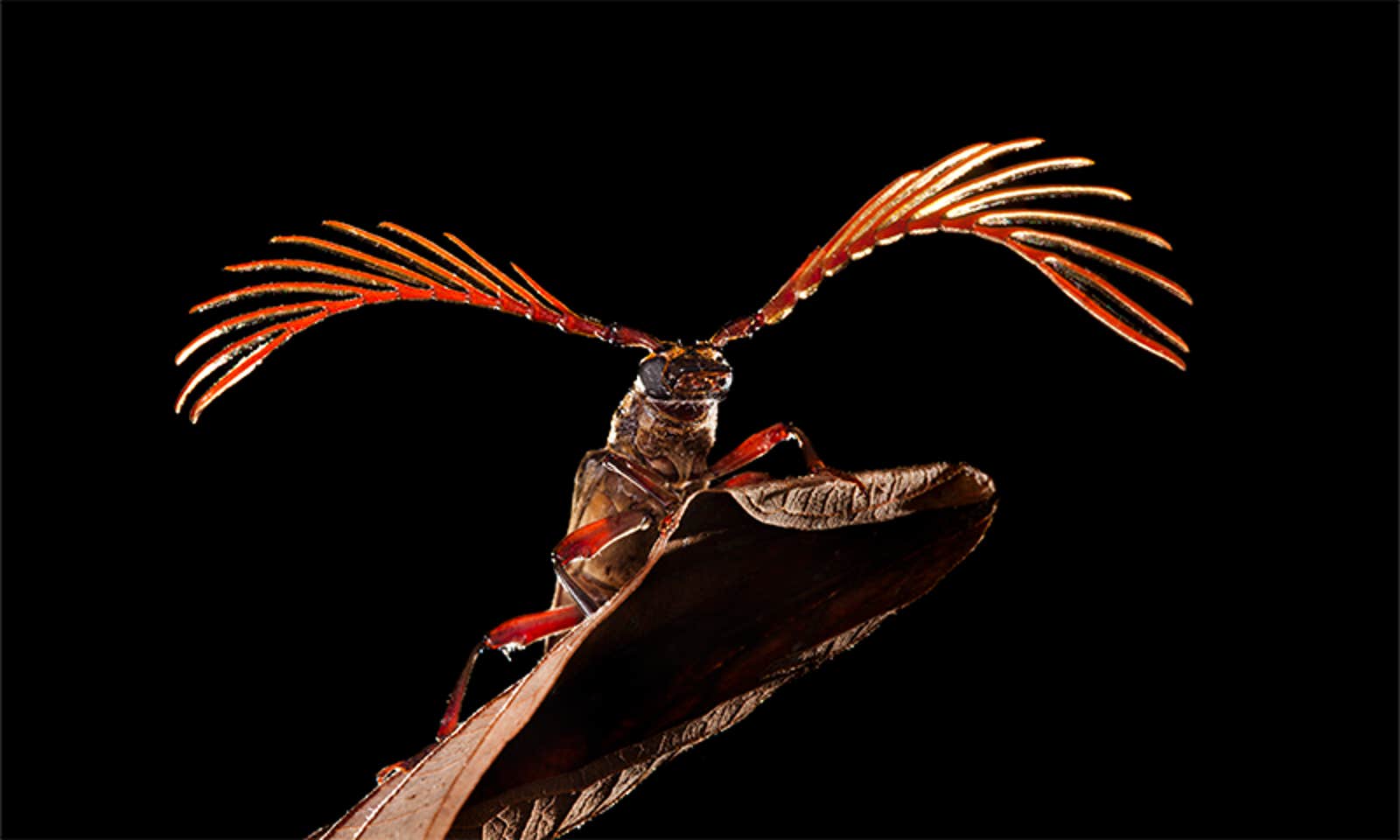Male longhorn beetles of the genus Cyriopalus, such as the one pictured here, sport unusually massive antennae. About as long as their bodies, these feathery feelers allow the beetles to detect faint chemical cues in their environment, leading them to attractive mates and to the plants they eat. While many longhorn beetles—also known as longicorns—have unbranched antennae, the more complex branched versions that some species display may be more sensitive because they have greater surface area.
The individual pictured here represents one of several dozen beetle species that photographer Alex Hyde documented while on expedition in the Mailua Basin Conservation Area, a protected patch of rainforest in northern Borneo that’s a biodiversity hotspot. After dark each day, Hyde entered the forest with a camera and flashlight to photograph all the insects he could find. “Walking in a tropical rainforest at night is a feast for the senses and an experience that I will never tire of,” Hyde says. “The humidity and heat are a small price to pay for being surrounded by so much fascinating wildlife.”
One beetle spews boiling hot liquid from its backside.
As a group, beetles exhibit an almost preposterous amount of biodiversity. They make up around a quarter of the 1.7 million or so species of plants and animals known to science. There are more than three times as many kinds of beetles as there are of flies—the next most species-rich animal group—and more than five times as many species of beetles as there are of fish, reptiles, birds, amphibians, and mammals combined. Including those yet to be discovered, there may be more than 1 million species of beetles.
Researchers suggest several reasons for this profusion of Coleoptera, including the 300-million-year evolutionary history of the group and the coevolution of beetles alongside a vast array of flowering plants. In other words, there are a lot of beetles at least in part because they’ve had a lot of time to specialize to take advantage of a lot of different plants. With such abundant diversity comes a staggering array of shapes, sizes, behaviors, and adaptations as each species carves out its own ecological niche. Some have evolved to be as long as a standard No. 2 pencil, while others are shorter than the width of that pencil’s sharpened tip. One beetle spews boiling hot liquid from its backside to defend itself from threats.
Despite the myriad ways that beetles have adapted, like all insects, they face a world of new threats, including habitat loss and fragmentation from human development, as well as pesticides and climate change. Of the several hundred beetle species on the IUCN Red List with documented population trends, more than 73 percent are declining. Through his photography, Hyde reveals the remarkable beauty that could be lost every time one goes extinct.
One needn’t travel as far as Hyde does to marvel at the biodiversity of beetles—or to protect it. Many beetles, including longhorns, are “wood borers,” often feeding on dead wood during their larval stage. “You can make a real difference to local beetle populations where you live by leaving a pile of logs to slowly decay in a shady spot,” Hyde says. Each species you encounter will be one in a million. ![]()
Alex Hyde is a freelance natural history photographer. Whether in a tropical rainforest or his own back garden, he specializes in the smaller organisms that are so often overlooked. He is based in the Peak District National Park in the United Kingdom and runs tours and workshops on macro photography.
This story originally appeared in bioGraphic, an independent magazine about nature and regeneration powered by the California Academy of Sciences.




























